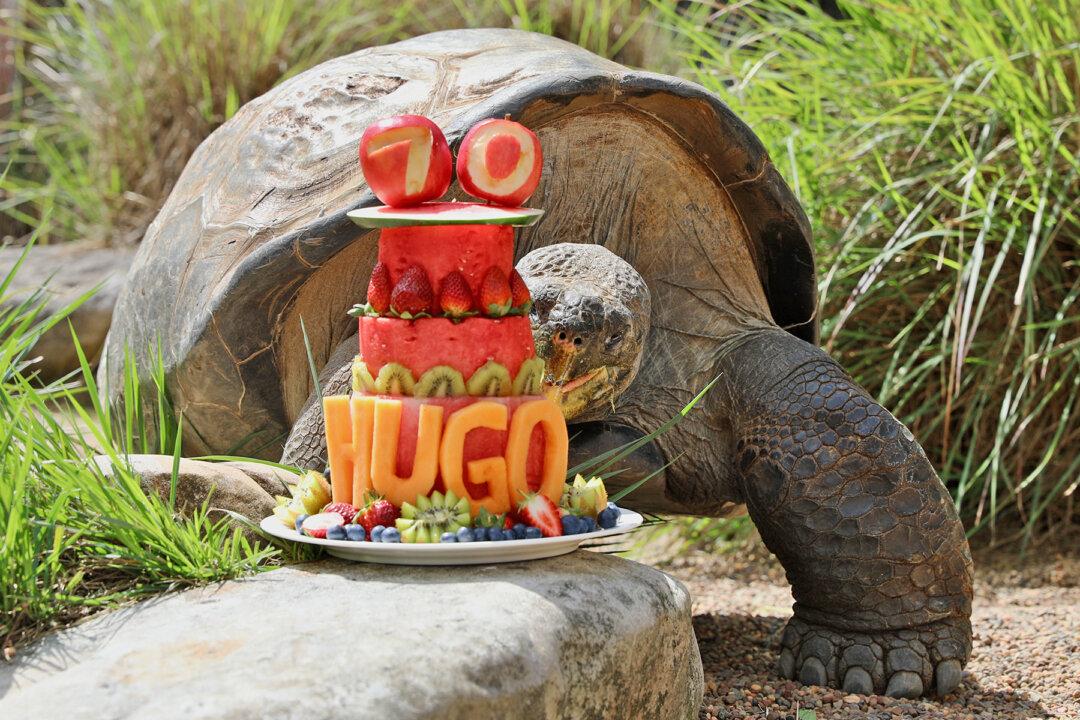The oldest resident at the Australian Reptile Park, Hugo the Galapagos tortoise, has turned 70 years old in style. The tortoise rang in his special day with a lot of love from his caretakers and an incredible birthday cake fashioned entirely from fruit.
The fully grown, 402 pounds (approx. 182 kg) giant tortoise has been resident at the park in Gosford, just north of Sydney, since 1963.





